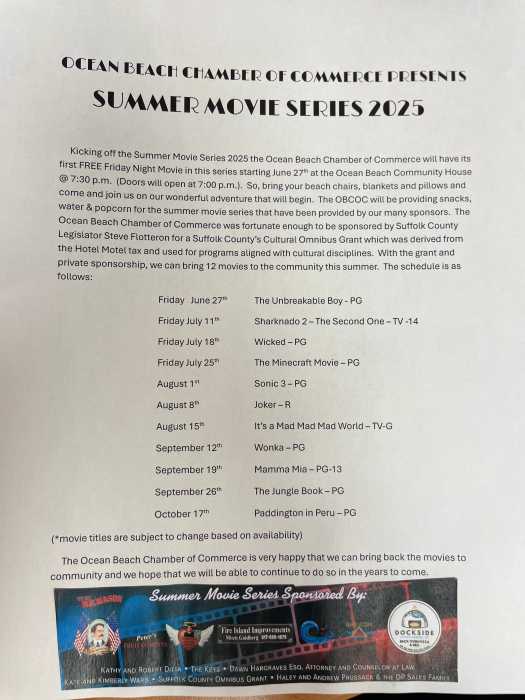If you are new to north Brooklyn and its Polish food, you have been missing out.
Polish food does not get universal respect — the Larousse Gastronomique praises Poles chiefly for their baking and vodka drinking — but this Rodney Dangerfield of a cuisine will surprise you.
Aside from providing a little history of Poland, from its centuries of involuntary contact with Russians, Germans and Hungarians to more peaceful interaction with Jewish culture, the menus of any of the several dozen Polish restaurants throughout Greenpoint and Williamsburg offer food that is wholesome, tasty and as close to what grandma used to make — if your grandma was anything like my Czech grandma — as any restaurant food in the five boroughs.
Recently, Beside the Point sat down with genuine Poles Malgosia Dunin and Kris Kozlowski for lunch and an introductory course in Polish eating at Lomzynianka at 646 Manhattan Ave., a block from the Nassau Avenue stop on the G train. Incidentally, no one at the restaurant could tell us why it is called “Lomzynianka” [Wohm-zhin-YAHN-ka], which means “girl from Lomza,” but my guess is that this particular girl was either a whiz in the kitchen or a bit on the heavy side.
Most national cuisines have themes, and the two main themes of Polish cooking are long-term storage and things that you have to bend over and pull out of the ground.
“We are talking about a farming, peasant culture in a climate with a very short growing season,” Dunin said. “The prevailing foods tend to be those that can be pickled, dried, smoked, salted or dry-stored.”
Sure enough, open the menu and you will find few dishes that do not contain cabbage, onions, potatoes, beets, carrots, cucumbers, mushrooms, horseradish, smoked or cured sausage, cheap cuts or breaded cutlets of beef, pork or chicken. There is a lot of boiling, frying and stewing.
Fresh green salad? Leave that to Alice Waters.
You start with soup, which by Polish law must be accompanied by bread. The highlights are krupnik (mushroom barley soup), zurek (a white borscht, pronounced zhoo-rek), red borscht with uszka (delicious dumplings sometimes flavored with mushroom) and flaczki (tripe in broth, pronounced flatch-kee).
In the summer, there are yummy, refreshing cold soups such as owocowa (fruit soup, pronounced oh-voh-tsoh-vah) and chlodnik [kwod-nik] made of buttermilk, beetroot leaves, cucumber and dill.
Then comes the main course, which might include:
Golabki [gah-wum-kee]: Literally “pigeons,” these are rice- and meat- (no, not pigeon-) stuffed cabbage leaves, stewed in a light tomato sauce. Eat a pair of these and be prepared to skip your next meal.
Kielbasa [kee-oo-bahsa]: Many Americans know this as a garlicky sausage that can be found next to the hot dogs at the A&P, but the real thing comes in two forms: smoked, of which there are many types; and fresh, which is grilled or boiled and served with mustard or a pickled beat horseradish called cwikla [tch-vee-kwah].
Pierogi [peer-oh-ghee]: Ravioli’s heavier Slavic cousin, these may contain cheese and potato (ruskie, or “Russian”); meat; sauerkraut and mushrooms; or nothing (leniwe [leh-nee-veh] or “lazy”).
Bigos [bee-gose]: Sometimes translated as “hunter’s stew,” this one-pot winter dish contains nearly everything in the Polish larder — sauerkraut, dried mushrooms, kielbasa, bacon, beef, onions, red wine and dried prunes. One of the glories of Polish cooking, bigos is like the ragu of Bologna in its variety.
“It is a point of pride in every Polish household that their bigos is made slightly differently from anyone else’s,” Dunin said, A given recipe may omit several of the above ingredients or may contain others.
Placki ziemnaczane [plotz-kee zhem-nah-tchan-eh]: These potato pancakes must be cooked to order, as they were at Lomzynianka. They are delicious. We also tried a variation called Hungarian pie or placek wegierski [plah-tzek vengh-yare-skee], made of potato pancakes on top of beef goulash. It is as filling as it sounds, but worth it.
Out of a commitment to journalism, I ordered blintzes for dessert. These are crepes filled with cheese, blueberries, cherries or strawberries and topped with sour cream. Many Polish restaurants also serve compote, or fruit stewed in a light syrup.
There are two other things you need to know. One is that Lomzynianka and similar places are unconscionably cheap — our far-too-large meal for three came to under $30 — and the other is the Polish phrase for take-out: na wynos [nah vih-nos]. You’ll need it.
Tom Gilbert, a writer and historian, lives in Greenpoint.
The Kitchen Sink
The Espana Streb Trapeze Academy of Williamsburg is offering trapeze classes seven days a week for kids, adults, advanced and a new workout class. They also have a Halloween show coming up in October, “Ghouls just wanna have fun!” and “Pumpkins and pasties,” a burlesque circus. Both benefit the Streb’s Kids in Control outreach program. Check out www.espanastrebtrapeze.org for more info. …
On Sept. 19, students, volunteers and project leaders unveiled a community mural at the corner of Woodbine and Knickerbocker avenues, representing the 30-year anniversary of the city’s infamous 1977 blackout, which left Bushwick in ruins. But the comeback has happened, thanks to institutions like the Academy of Urban Planning, a public high school. …
The next Town Square meeting will be held on Monday, Oct. 1 at 102 Oak Street (at Franklin Street) at 7 pm. Call (718) 609-1090 for info. … Need some real estate in Williamsburg? You’re probably going to be calling Andrew Sitomer, who is the neighborhood’s new broker for the Massey Knakal realty giant. He’s only 22, but the commission from his first sale is more than we make in two years! …
Ran into our pal Robert Guskind, the maestro behind the always-excellent Gowanus Lounge blog, as he shot a picture of an abandoned bike at the corner of Bedford and North 11th Street. He got his scoop and we got this item.
























